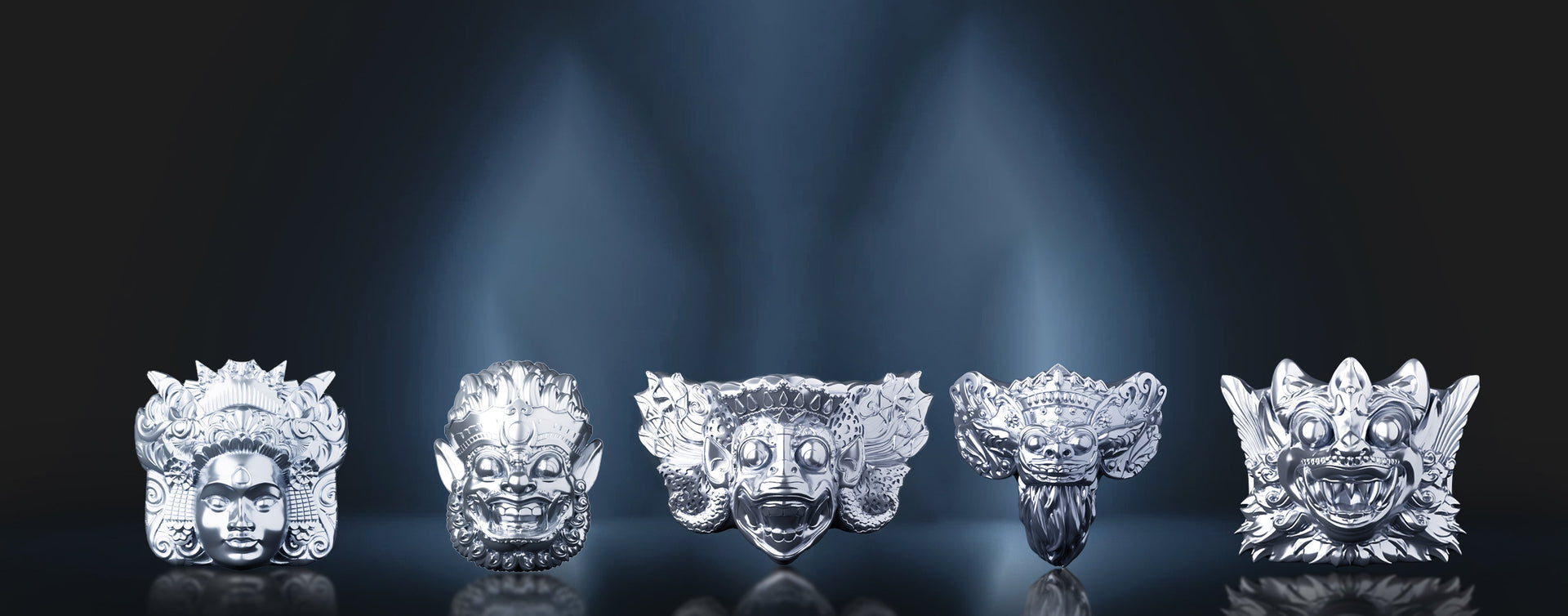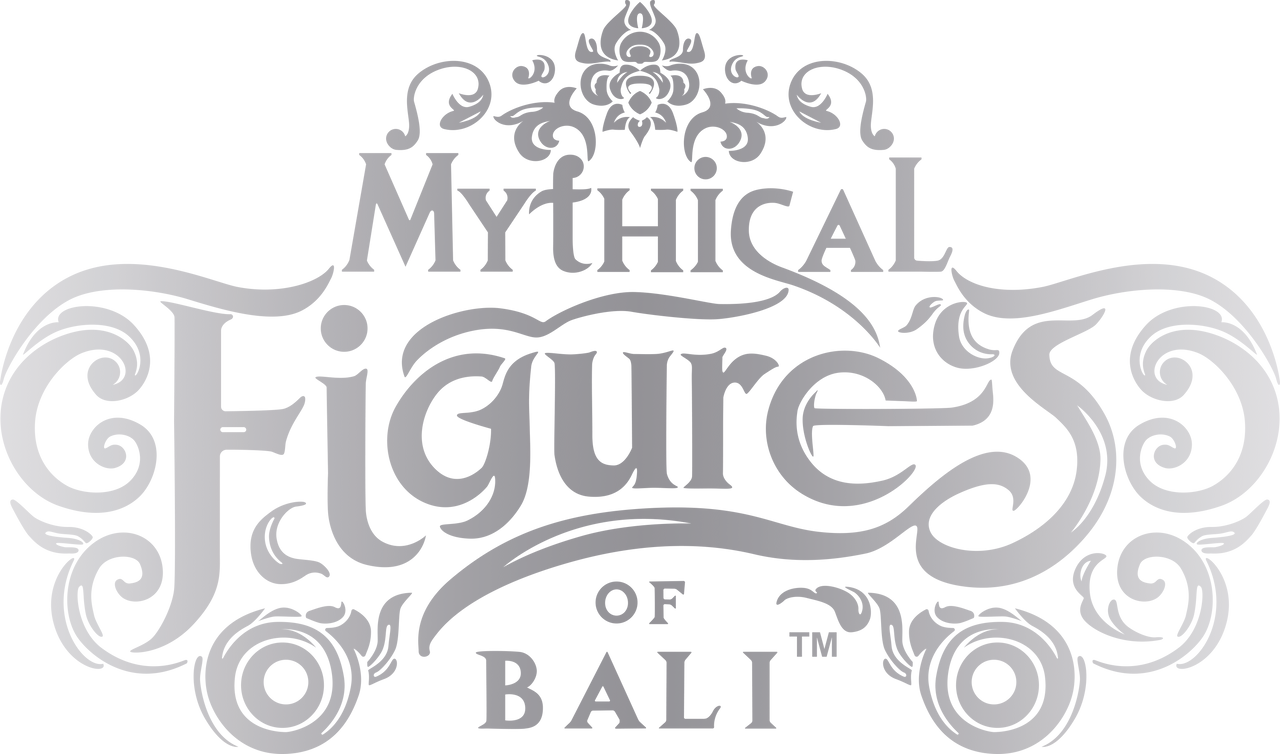
The Making of Mythical Figures of Bali™
The Making of Mythical Figures of Bali™
How a designer turned legends into silver—and inspiration into something lasting.
It all began in Ubud.
In 2016, I came to Bali after finishing a project in Jakarta. It wasn’t my first time in Southeast Asia, but it was my first real encounter with Ubud. I thought I knew what to expect—rice fields, temples, yoga retreats—but as soon as I arrived, I realized Bali is not what people describe. It’s more subtle, more sacred, and above all, more human.
I stayed at Suparsa’s Homestay, tucked away in the village, where you hear roosters at sunrise and offerings being placed at dawn. I wasn’t just observing—I was absorbing. Ubud doesn’t shout. It whispers, and those whispers stay with you.
Everywhere I looked, I saw figures from myth—Barong masks hanging above doorways, statues of Dewi Sri by rice fields, images of Hanoman in roadside shrines. These weren't relics. They were living symbols of balance, courage, protection, and prosperity. That’s when the idea formed:
Could I create something that captures the soul of these stories? Something you can carry—not just physically, but emotionally?
From sketches to spirits.
I’ve been designing for over 40 years—retail spaces, interiors, branding, experiences—but this was different. This wasn’t about function or format. It was about meaning. About honoring something I didn’t grow up with, but deeply respected.
Back in Belgium, I started drawing. I researched each figure carefully, not just for what they look like, but for what they represent:
-
Barong, the eternal protector
-
Hanoman, the brave and loyal warrior
-
Dewi Sri, goddess of fertility and rice
-
Dwarapala, the temple gate guardian
-
The Lion, symbol of nobility and leadership
The figures needed to feel timeless, not trendy. Mythic, not decorative. I didn’t want to re-interpret them—I wanted to translate them into a form people could wear, hold, and remember.
So I took my sketches and worked with a CAD studio to model them in precise 3D form, capturing every curve, tooth, and gesture. This wasn’t standard jewelry modeling. These were miniature sculptures with weight and character. Their eyes had to hold presence. Their posture had to tell a story.
The Celuk connection: Where silver still speaks.
Now, here’s where the process took a different path.
In Celuk—the silversmithing village just outside Ubud—jewelry is still made the traditional way. Artisans sculpt directly in wax by hand, one by one. It’s beautiful work. But I wanted to merge that tradition with the design precision of digital tools. A hybrid process that hadn’t been done in Bali before.
So I had the final 3D figures printed in brass using one of the world’s best high-definition printers. These brass pieces became the master models. They were sent to Bali, where molds were made, wax replicas were cast, and then assembled onto wax trees in the traditional lost-wax method.
That’s where Eddy Santana came in—my production partner in Celuk. He’s not a silversmith himself, but a fixer. A connector. The son of a silversmith, with two decades of experience and a network of trusted hands. Eddy is the one who makes sure the right person does the right step. Without him, this project wouldn’t exist.
The figures are cast in sterling silver 925 and go through a careful, multi-step process:
-
The plaster shell is removed
-
The piece is cleaned and polished
-
Fine detailing is done by hand
-
A touch of oxidizer is added to bring contrast and depth
-
And finally, each figure is laser-engraved on the back with our logo and the 925 hallmark—using a single EPS file to ensure perfection
We originally considered coating the silver in PU for protection, but decided against it. Real silver should breathe. Instead, we include a small cloth inside the tube, treated with a natural cleaning solution to care for the piece over time.
Built to be discovered, not pushed.
The silver figure is then assembled onto a bracelet made of dark blue recycled leather, paired with braided navy cord and subtle decorative beads. The black stainless steel clasp features a removable middle piece, allowing it to shift from large to small. It’s designed to feel solid, elegant, and quietly intentional.
The packaging is just as thoughtful: a matte black cardboard tube, printed in silver. Inside is a QR code that links directly to the full story—because the piece isn’t complete without the tale it carries.
You won’t find this bracelet online. That was a conscious decision. I didn’t want Mythical Figures of Bali™ to be an e-commerce brand. I wanted it to feel personal, rare, and authentic. That’s why the bracelets are only available at a handful of selected 4–5 star hotels in Ubud—places that reflect the same care, quality, and soul that went into each piece.
Why I made this.
This wasn’t a client brief or a business plan. It was a creative instinct. Something I felt deep in my gut:
“These stories deserve to be carried.”
As a designer, I’ve always believed that storytelling doesn’t just happen in books or films—it happens in objects, in materials, in the way we present things to the world. This collection was my chance to bring everything I know—technology, symbolism, design, emotion—into one clear vision.
And above all, it’s a tribute.
To Bali, which gave me the idea.
To the figures, who have been here long before us.
And to the people, like Eddy and Putra and Nathalia, who helped shape it into something real.
Mythical Figures of Bali™ is not just a bracelet.
It’s a story cast in silver.
And I’m proud to say: it all started in Ubud.
